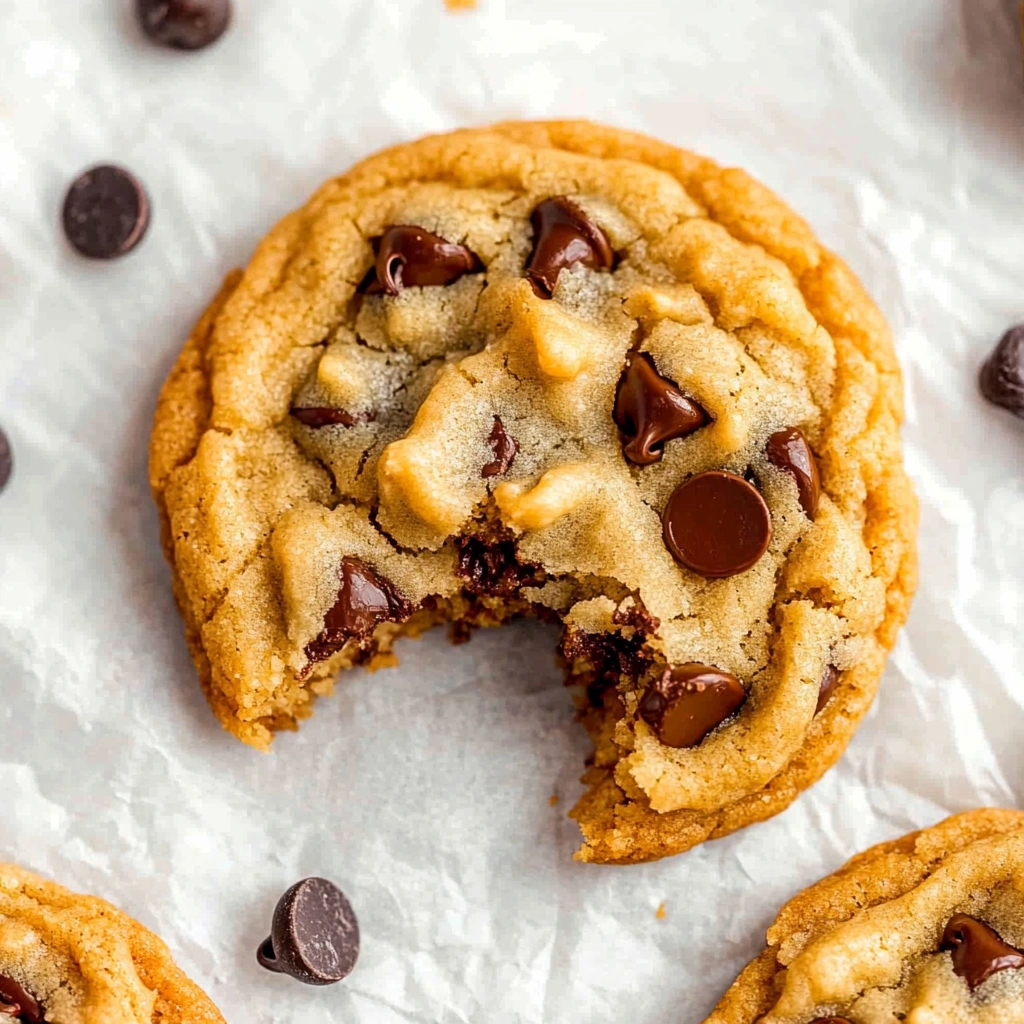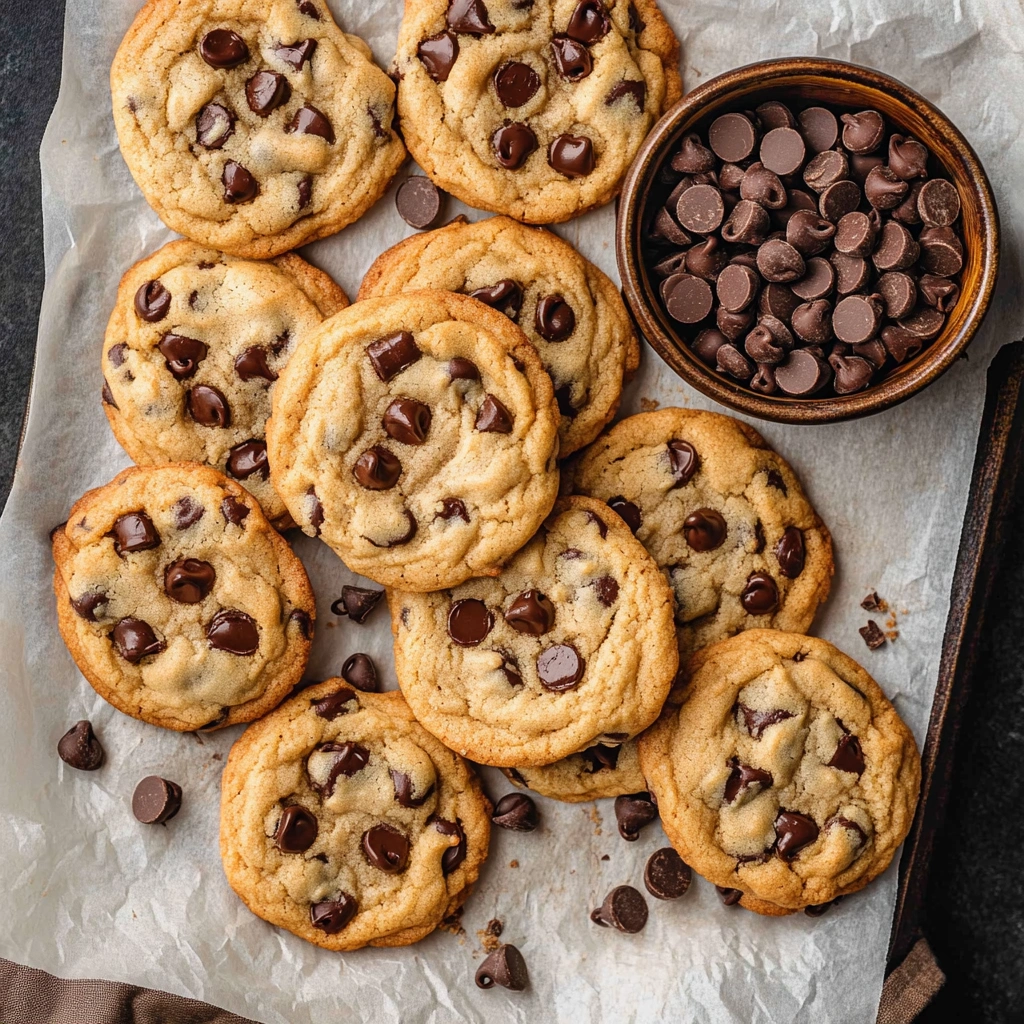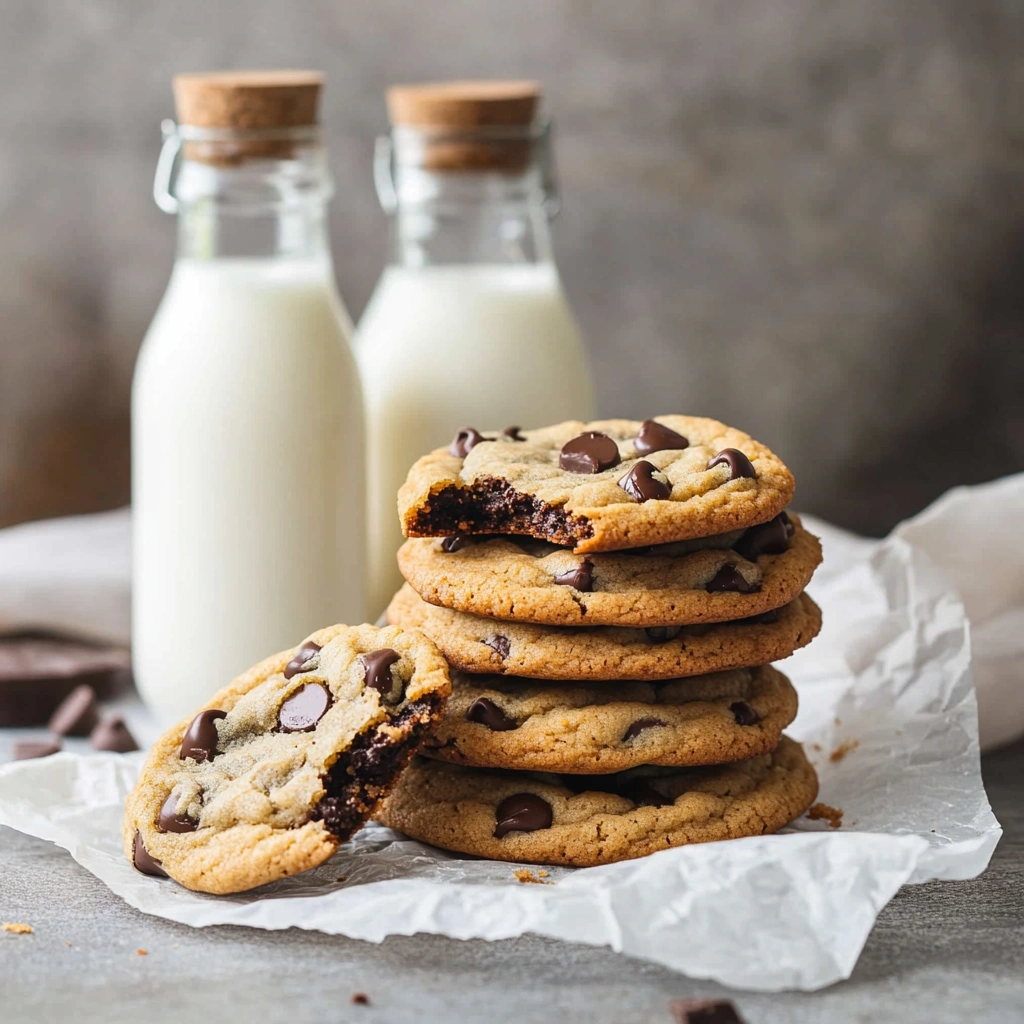Alright, let’s get real here. Cookies—soft, warm, gooey cookies—are one of life’s simple joys. But you know what’s not so joyful? Baking a batch, only to have them turn into hockey pucks by the next day. What is the secret ingredient to keep cookies soft? I’ve been there. The struggle is real, and it’s enough to make anyone wonder if soft cookies are some kind of sorcery.
Spoiler alert: they’re not. The secret to keeping cookies soft isn’t as complicated as you might think. It’s all about a few sneaky tricks and one game-changing ingredient. Ready to bake cookies so soft they practically melt in your mouth? Let’s do this!
Table of Contents
Table of Contents
Why Do Cookies Get Hard in the First Place?
Before we dive into the magic ingredient, let’s talk about why cookies lose their softness. You bake them, they’re perfect, and then—bam!—the next day, they’re as tough as last year’s fruitcake. What gives?
Here’s the deal: cookies lose moisture over time. When you bake them, water from the dough evaporates in the heat, leaving the cookies nice and fluffy. But as they cool, that leftover moisture slowly seeps out, leaving them dry and, well, kind of sad.
Print
The Best Soft Chocolate Chip Cookies
- Total Time: 20 minutes
- Yield: Serves 12
Description
These are THE BEST soft chocolate chip cookies! No chilling required. Just ultra thick, soft, classic chocolate chip cookies!
Ingredients
▢2 3/4 cups (349 grams) all-purpose flour, measured correctly
▢2 teaspoons cornstarch
▢1 teaspoon baking soda
▢1 teaspoon baking powder
▢1 teaspoon fine sea salt
▢10 tablespoons (141 grams) unsalted butter, at cool room temperature
▢1/4 cup (57 grams) cream cheese, at room temperature
▢1 1/4 cups (250 grams) light brown sugar
▢1/2 cup (100 grams) granulated sugar
▢2 large eggs, at cool room temperature
▢1 1/2 teaspoons vanilla
▢2 cups (340 grams) semi-sweet chocolate chips
Instructions
- If baking right away, preheat oven to 350ºF. Line baking sheets with parchment paper.
- In a medium bowl, whisk together the flour, cornstarch, baking soda, baking powder, and salt.
- In the bowl of an electric mixer, beat the butter, cream cheese, granulated sugar, and brown sugar on medium-high speed until light and creamy, about 2 minutes. Add in the eggs, one at a time, beating well after each addition. Beat in the vanilla. Slowly beat in the flour mixture. Stir in the chocolate chips.
- If time permits: Wrap dough in plastic wrap and refrigerate for at least 2 hours but no more than 72 hours. This allows the dough to “marinate” and the final cookies to become thicker and more flavorful. Let dough sit at room temperature until it is just soft enough to scoop.
- Using a medium (1 1/2-tablespoon size) spring-loaded scoop, drop balls of dough onto prepared baking sheets.
- Bake for 10 to 11 minutes, or until barely golden brown. Don’t overbake – the cookies will continue to cook from residual heat. Cool for 5 minutes before removing to wire racks to cool completely. Cookies can be stored in an airtight container at room temperature for up to 3 days.
- Prep Time: 10 minutes
- Cook Time: 10 minutes
- Category: Dessert
- Method: bake
- Cuisine: American
Nutrition
- Serving Size: 1 seving
- Calories: 250kcal
- Sugar: 20.5g
- Sodium: 169.3mg
- Fat: 12.2g
- Carbohydrates: 33.4g
- Fiber: 1.4g
- Protein: 3.2g
- Cholesterol: 35.9mg
The Secret Ingredient: Cornstarch
Yup, cornstarch. What is the secret ingredient to keep cookies soft? It’s probably already sitting in your pantry, right next to the flour and sugar. This humble little powder works wonders in cookie dough. It helps lock in moisture while giving the cookies a soft, almost pillowy texture. Think of cornstarch as the superhero of baking—it works quietly behind the scenes, answering the question: What is the secret ingredient to keep cookies soft?
Here’s how it works: cornstarch binds to the liquid in your cookie dough, creating a softer crumb. It also prevents too much spreading, so your cookies stay thick and tender. Honestly, it’s a game-changer.
For a fun twist on traditional cookies, check out this Crookie recipe that combines cookies and brownies in one delicious treat!

How to Add Cornstarch to Your Cookies
Now, don’t go dumping half a cup of cornstarch into your cookie dough—moderation is key. Here’s a simple guide:
- For Regular Cookies: Add 1-2 teaspoons of cornstarch for every cup of flour in the recipe.
- For Super Soft Cookies: If you want cookies that are borderline cake-like (in a good way), bump it up to 1 tablespoon per cup of flour.
Other Tips for Keeping Cookies Soft
Cornstarch is the MVP, but there are a few more tricks to keep your cookies soft for days—yes, days!
1. Use Brown Sugar Instead of White
Brown sugar has more moisture because of the molasses content. The extra moisture does wonders for soft cookies. Plus, it gives them that caramel-y flavor we all love.
2. Don’t Overbake
I can’t stress this enough—take those cookies out of the oven before they look done. Cookies continue to bake on the sheet after you pull them out. Aim for edges that are set but centers that are slightly underdone.
3. Add an Extra Egg Yolk
Extra yolks = extra richness and moisture. Swap one whole egg for two yolks, and you’ll notice the difference.
4. Store with a Slice of Bread
This might sound strange, but trust me, it works. Put a slice of bread in the cookie container (use a soft sandwich bread). The bread keeps the air moist, so your cookies don’t dry out.
5. Chill Your Dough
Cold dough spreads less and retains more moisture. Pop your dough in the fridge for at least an hour before baking.

A Step-by-Step Recipe for Soft Chocolate Chip Cookies
Let’s put this into practice. Here’s my foolproof recipe for soft chocolate chip cookies.
Ingredients
- 2 1/4 cups all-purpose flour
- 1 tablespoon cornstarch
- 1/2 teaspoon baking soda
- 1/2 teaspoon salt
- 3/4 cup unsalted butter, melted
- 3/4 cup brown sugar, packed
- 1/2 cup granulated sugar
- 1 large egg + 1 egg yolk
- 2 teaspoons vanilla extract
- 1 1/2 cups semi-sweet chocolate chips
Instructions
- Mix Dry Ingredients: In a bowl, whisk together flour, cornstarch, baking soda, and salt. Set aside.
- Cream Butter and Sugars: In another bowl, combine melted butter, brown sugar, and granulated sugar. Beat until smooth.
- Add Eggs and Vanilla: Stir in the egg, egg yolk, and vanilla extract.
- Combine Wet and Dry: Gradually add the dry ingredients to the wet ingredients. Mix just until combined—don’t overmix!
- Add Chocolate Chips: Fold in the chocolate chips.
- Chill the Dough: Cover the bowl and refrigerate for at least 1 hour (overnight is even better).
- Bake: Preheat your oven to 350°F. Scoop the dough onto a baking sheet lined with parchment paper. Bake for 8-10 minutes, or until the edges are set but the centers look underdone.
Adding Dairy for Softness: Another Trick to Try
If you’re looking for even more ways to keep your cookies soft, consider adding dairy to your dough. Ingredients like cream cheese, sour cream, or even whole milk can make a big difference. They not only add richness but also lock in moisture, which is crucial for keeping cookies soft over time. For example, swapping out a small portion of butter for cream cheese can give your cookies an almost velvety texture. This works especially well for sugar cookies or snickerdoodles. Just remember to adjust your dry ingredients slightly to keep the dough from getting too sticky.

The Role of Fats in Soft Cookies
Let’s talk about fats—because, honestly, they’re the backbone of a great cookie. What is the secret ingredient to keep cookies soft? One answer lies in using a mix of butter and shortening. Shortening doesn’t contain water, so it prevents over-evaporation during baking, helping your cookies retain moisture. This creates that perfect balance between a soft center and lightly crisp edges. If you’re not a fan of shortening, try using higher-fat butter instead. The added fat keeps the dough moist and ensures your cookies remain tender over time.
How Humidity Affects Cookie Softness
Here’s a fun fact: what is the secret ingredient to keep cookies soft? might depend on where you live. Humidity plays a big role in baking because it affects how much moisture your flour absorbs. In a dry climate, cookies might lose moisture faster, leading to a harder texture. On the other hand, high humidity can make the dough too wet and throw off your recipe. A simple fix? Weigh your flour instead of measuring it by volume, and tweak the liquid ingredients slightly to ensure your cookies stay perfectly soft, no matter the weather.
Why Room Temperature Ingredients Matter
You’ve probably heard this tip before, but it’s worth repeating: always use room-temperature ingredients when baking. Butter, eggs, and even your milk or cream should be brought to room temp before mixing. Why? Because room-temperature ingredients blend more easily, creating a uniform dough. This means your cookies bake evenly, which is key to keeping them soft. Cold butter, on the other hand, can lead to uneven pockets of fat, causing some cookies to dry out while others stay too wet.
Experimenting with Different Sugars
The type of sugar you use can have a huge impact on cookie softness. What is the secret ingredient to keep cookies soft? While brown sugar is the star for soft cookies, swapping in honey, maple syrup, or even molasses can give similar results. These liquid sweeteners add extra moisture, helping your cookies stay soft longer. Plus, they bring unique flavors to the table. Honey, for example, pairs beautifully with oatmeal cookies, while molasses works wonders in gingerbread or spice cookies.
Keeping Cookies Soft When Reheating
Ever pulled a cookie from the fridge or freezer and found it’s not as soft as you remembered? Don’t worry—it’s easy to fix. What is the secret ingredient to keep cookies soft? While cornstarch and proper storage help, a quick zap in the microwave (about 5-10 seconds) can work wonders. The heat restores moisture and softens the cookie right up. Reheating multiple cookies? Wrap them in a damp paper towel and microwave them together. It’s like magic—your cookies will taste freshly baked all over again!
FAQs About What is the secret ingredient to keep cookies soft?
Can I Use Cornstarch in Any Cookie Recipe?
Yes! Just adjust the amount based on how soft you want the cookies. For delicate cookies like sugar cookies, stick to about 1 teaspoon per cup of flour.
What’s the Best Way to Store Soft Cookies?
Keep your cookies in an airtight container at room temperature. If you want extra softness, add a slice of bread or even a marshmallow.
Can I Freeze Cookies Without Making Them Hard?
Absolutely. Freeze them in a single layer, then transfer them to a freezer-safe bag. Thaw at room temperature when ready to eat.
Why Does My Dough Need to Be Cold?
Chilled dough spreads less in the oven, which helps cookies stay thick and soft. Plus, it gives the flavors time to develop.
Conclusion
Keeping cookies soft isn’t just about following a recipe—it’s about understanding the little things that make a big difference. What is the secret ingredient to keep cookies soft? Whether you’re adding a spoonful of cornstarch, swapping white sugar for brown, or sneaking a slice of bread into the storage container, these tricks can help you bake cookies that stay tender and chewy for days.
And let’s not forget, baking is as much about experimenting as it is about following rules. What is the secret ingredient to keep cookies soft? Play around with adding cream cheese, testing different types of sugar, or chilling your dough longer. Once you find your go-to combination, you’ll never look back.
So, the next time someone bites into your cookies and asks, “What’s your secret?” you can just smile, knowing it’s a mix of cornstarch, a touch of care, and a little baking magic. Now, go preheat that oven—your softest cookies yet are just a batch away! 🍪
Want even more delicious ideas? Check out our Pinterest page for mouthwatering recipes and kitchen tips!


1 thought on “The Secret Ingredient That Keeps Cookies Soft and Chewy Every Time”